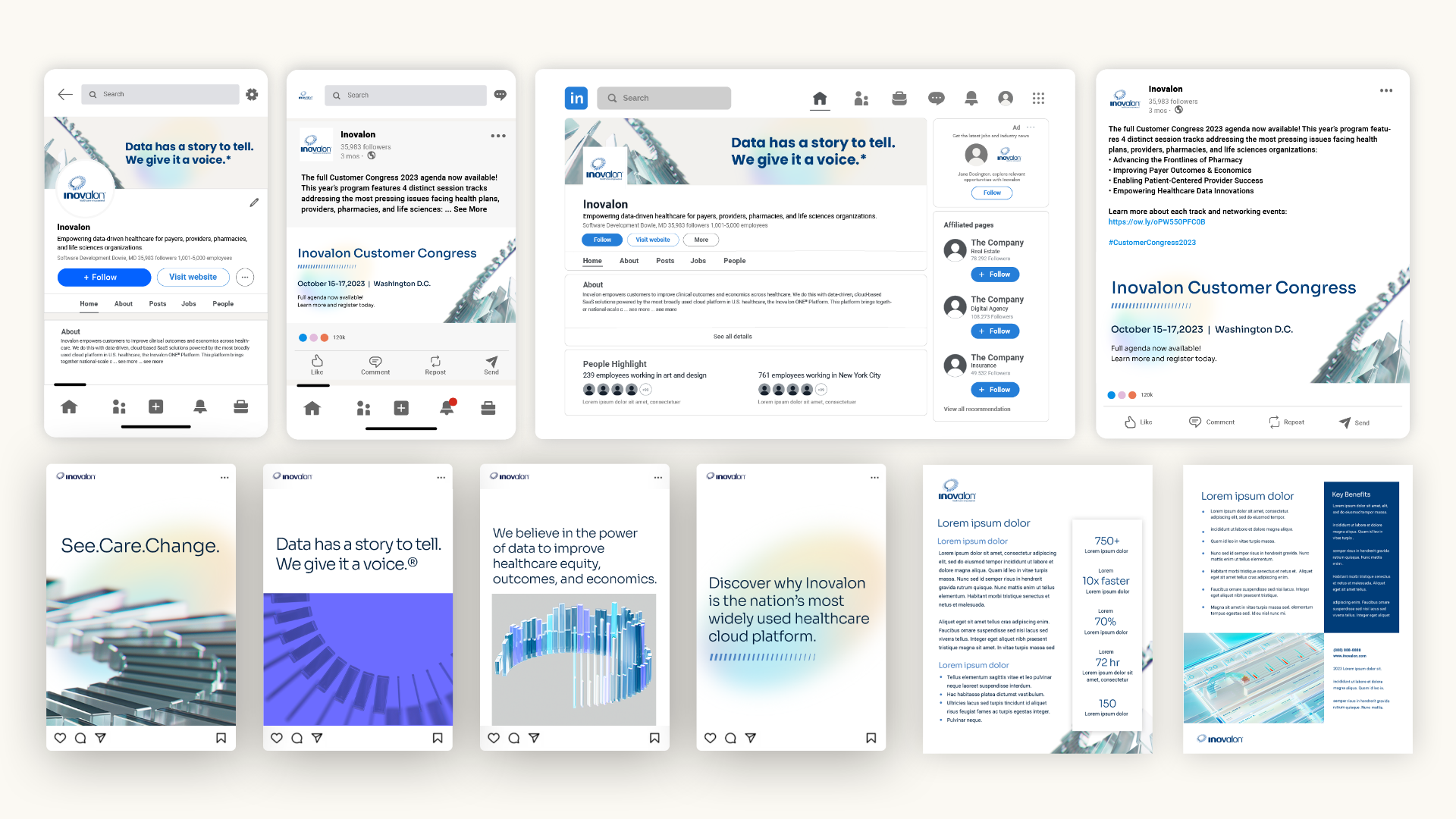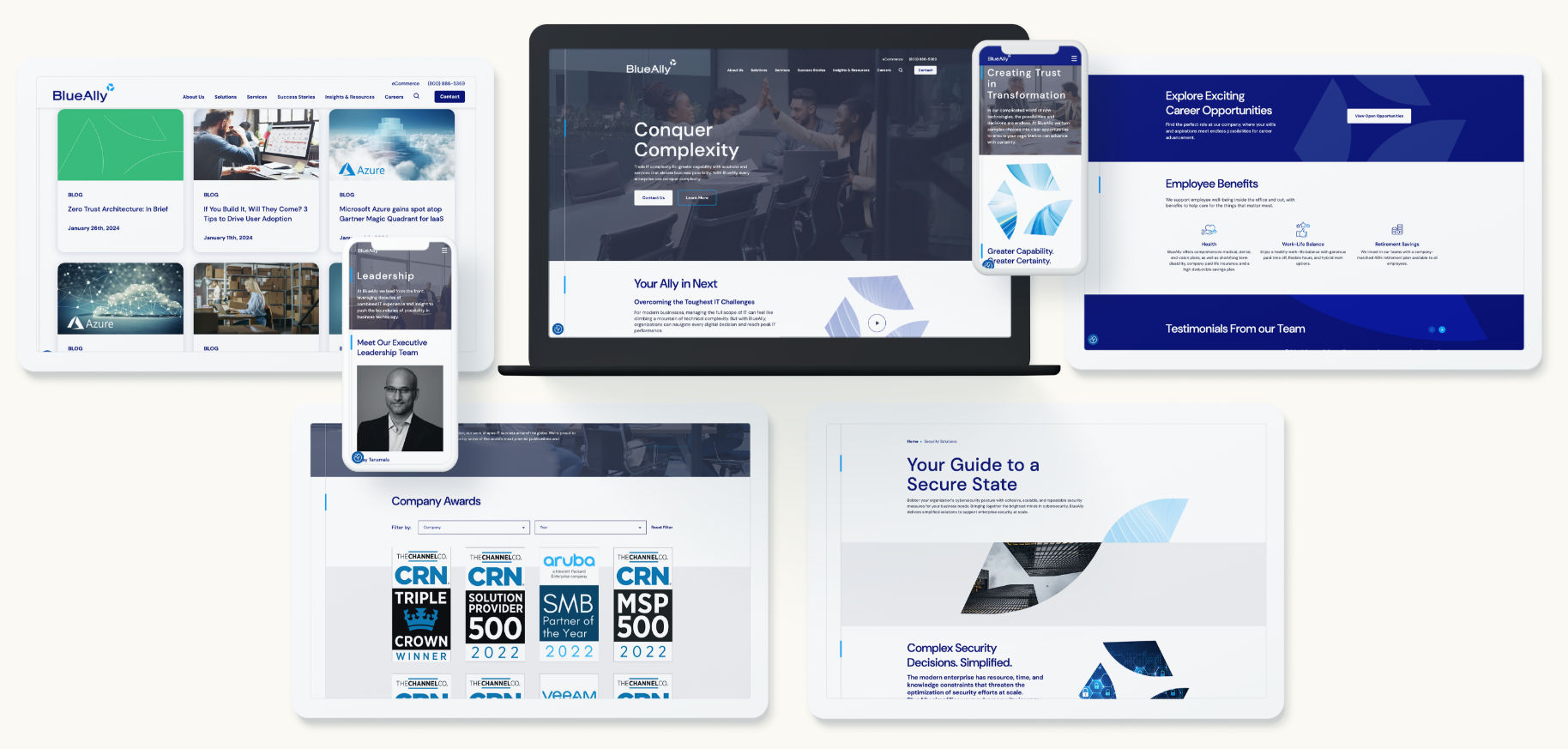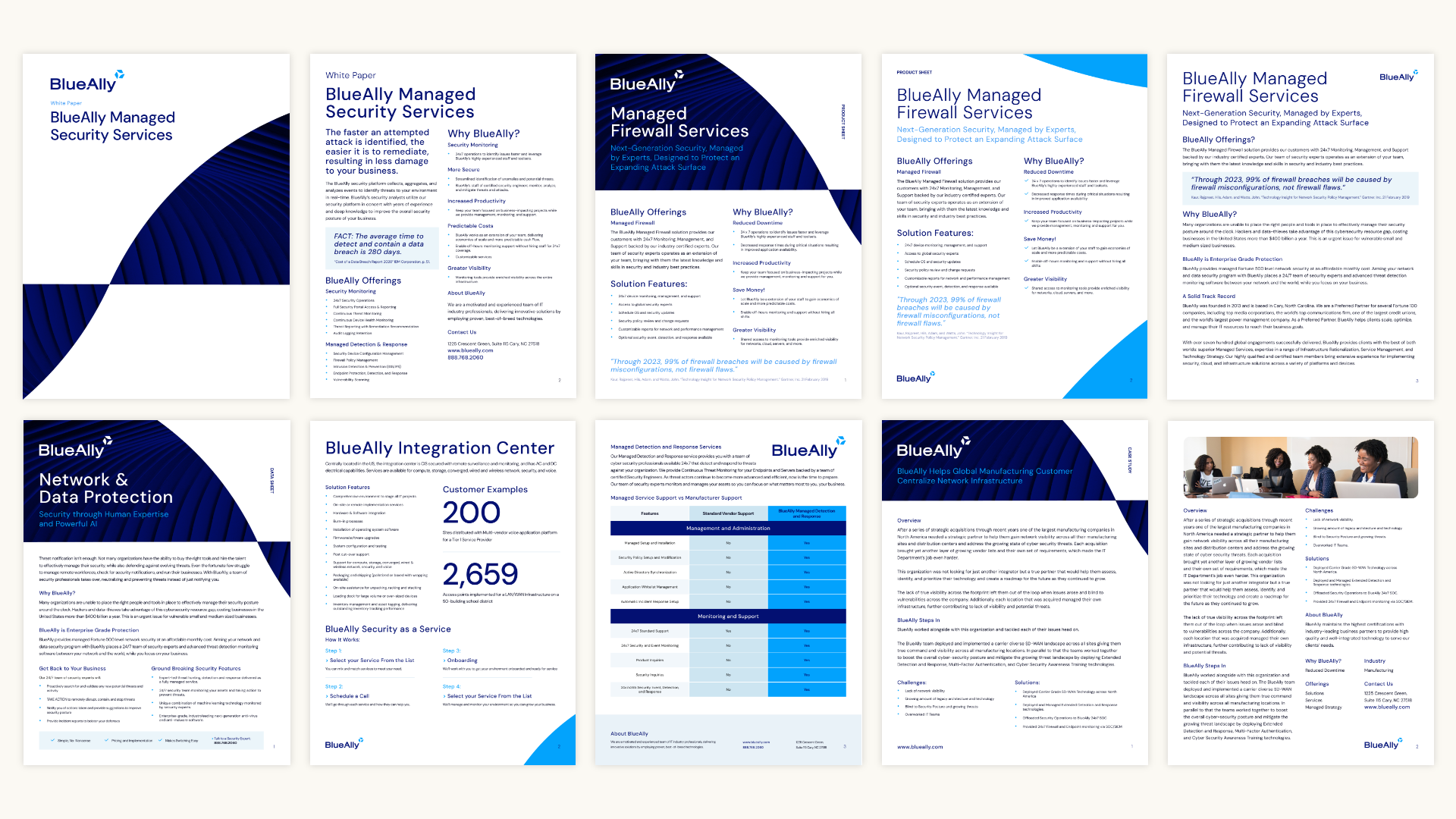In the healthcare industry, trust and privacy are paramount. Patients and providers alike demand reassurance that sensitive data is being handled securely and ethically. As data breaches and cybersecurity threats make headlines, healthcare organizations have a unique opportunity to differentiate themselves by showcasing their commitment to data privacy and compliance.
For healthcare marketers, emphasizing strong privacy practices, such as HIPAA compliance and cutting-edge data security measures, isn’t just a regulatory necessity—it’s a strategic advantage. This blog explores how to turn data privacy into a compelling value proposition that resonates with hospitals, clinics, and healthcare networks.

Why Data Privacy Matters to Healthcare Audiences
Healthcare professionals operate in one of the most highly regulated and privacy-sensitive industries. Their ability to deliver care hinges on secure and accurate data management. When choosing partners, they look for organizations that prioritize data security as much as they do.
Highlighting your commitment to data privacy addresses several key buyer concerns:
- Regulatory Compliance: Ensuring patient confidentiality is a non-negotiable requirement for any healthcare partner. Compliance with standards like HIPAA or GDPR signals reliability.
- Trust and Transparency: Organizations that communicate openly about their privacy practices foster trust with their audience.
- Risk Mitigation: Data breaches can lead to severe financial penalties and reputational damage. Healthcare organizations want partners who reduce, not add to, their risks.
By aligning your marketing with these priorities, your brand becomes a trusted ally in a challenging landscape.
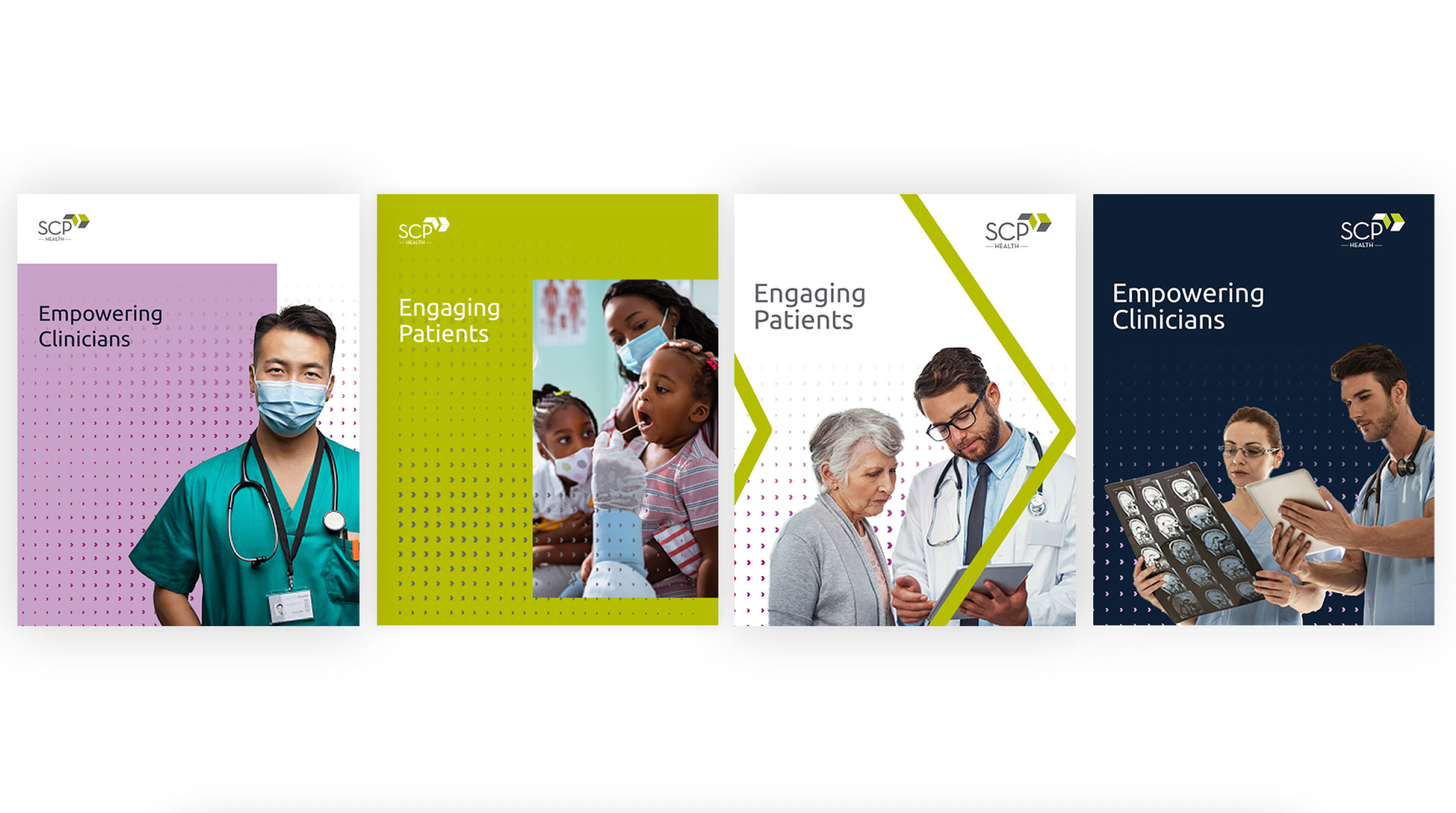
Turning Compliance into a Competitive Edge
Many healthcare companies view compliance as a box to check, but savvy marketers understand its potential as a selling point. Here’s how to elevate compliance from a baseline requirement to a standout feature:
- Showcase Certifications: Use your marketing materials to prominently feature industry certifications and accreditations. This reassures buyers that your processes meet or exceed regulatory standards.
- Educate Your Audience: Share blogs, videos, or whitepapers that explain complex data privacy topics in accessible language. For example, create content that demystifies HIPAA or offers tips for avoiding common compliance pitfalls.
- Promote a Proactive Approach: Highlight how your brand goes beyond basic compliance to implement advanced security measures, such as data encryption, threat detection, or regular audits.
These efforts position your brand as a partner that prioritizes customer safety and peace of mind.
Crafting a Privacy-Focused Brand Narrative
Marketing campaigns that weave privacy into their core messaging stand out in a crowded field. To craft a compelling narrative:
- Focus on the Human Impact: Remind your audience that data privacy isn’t just about technology—it’s about protecting patients’ lives and well-being.
- Highlight Your Role as a Guardian: Frame your organization as a protector of sensitive healthcare information.
- Use Real-World Examples: Share anonymized case studies to illustrate how your privacy protocols have successfully safeguarded patient data or avoided breaches.
When your messaging resonates on an emotional level, it leaves a lasting impression.
Tools and Channels to Amplify Your Message
To effectively convey your commitment to data privacy, leverage the right platforms and strategies:
- LinkedIn Thought Leadership: Publish posts or articles that share your team’s insights on data privacy trends in healthcare.
- Email Campaigns: Develop segmented campaigns targeting different audiences, such as CIOs or compliance officers, emphasizing your privacy strengths.
- Trade Shows and Events: Use conferences to showcase your expertise, whether through speaking engagements or interactive booth displays that highlight your security protocols.
These efforts ensure your message reaches decision-makers and influencers across the healthcare ecosystem.
Building Trust Through Data Privacy
In today’s healthcare landscape, a brand’s commitment to data privacy can set it apart from competitors. By proactively addressing privacy concerns and demonstrating compliance, healthcare marketers can build trust, foster long-term relationships, and create a competitive edge.
Are you ready to position your healthcare brand as a leader in data privacy and security? Contact Bluetext today to learn how we can help you create impactful campaigns that resonate with your audience.
The cybersecurity market has grown exponentially in recent years, driven by the increasing frequency of data breaches and cyberattacks. As a result, brands are finding it harder than ever to differentiate themselves in an oversaturated market. Standing out requires more than just advanced technology—it calls for a resilient brand that buyers trust, view as innovative, and recognize as a thought leader.
This blog explores actionable strategies to help your cybersecurity brand carve out its space in a crowded market and position itself as the go-to solution for customers seeking protection in an unpredictable digital landscape.
Establish Trust as Your Competitive Edge
In cybersecurity, trust isn’t just an advantage—it’s a requirement. Organizations are placing their most sensitive data and systems in your hands, making trustworthiness a key factor in every purchase decision. Here’s how you can build and communicate trust effectively:
- Highlight Proven Successes: Showcase your track record with detailed case studies. Demonstrate how your solutions mitigated real-world threats, protected sensitive data, or minimized downtime for clients.
- Emphasize Certifications: Industry certifications like ISO 27001, SOC 2, and GDPR compliance are essential trust signals. Feature them prominently across your website, marketing materials, and sales presentations.
- Be Transparent About Security Practices: Transparency builds confidence. Outline your security protocols, ongoing monitoring processes, and response strategies. This openness demonstrates you have nothing to hide and everything to offer.
By consistently reinforcing trust, your brand will earn the confidence of customers navigating an uncertain cybersecurity landscape.
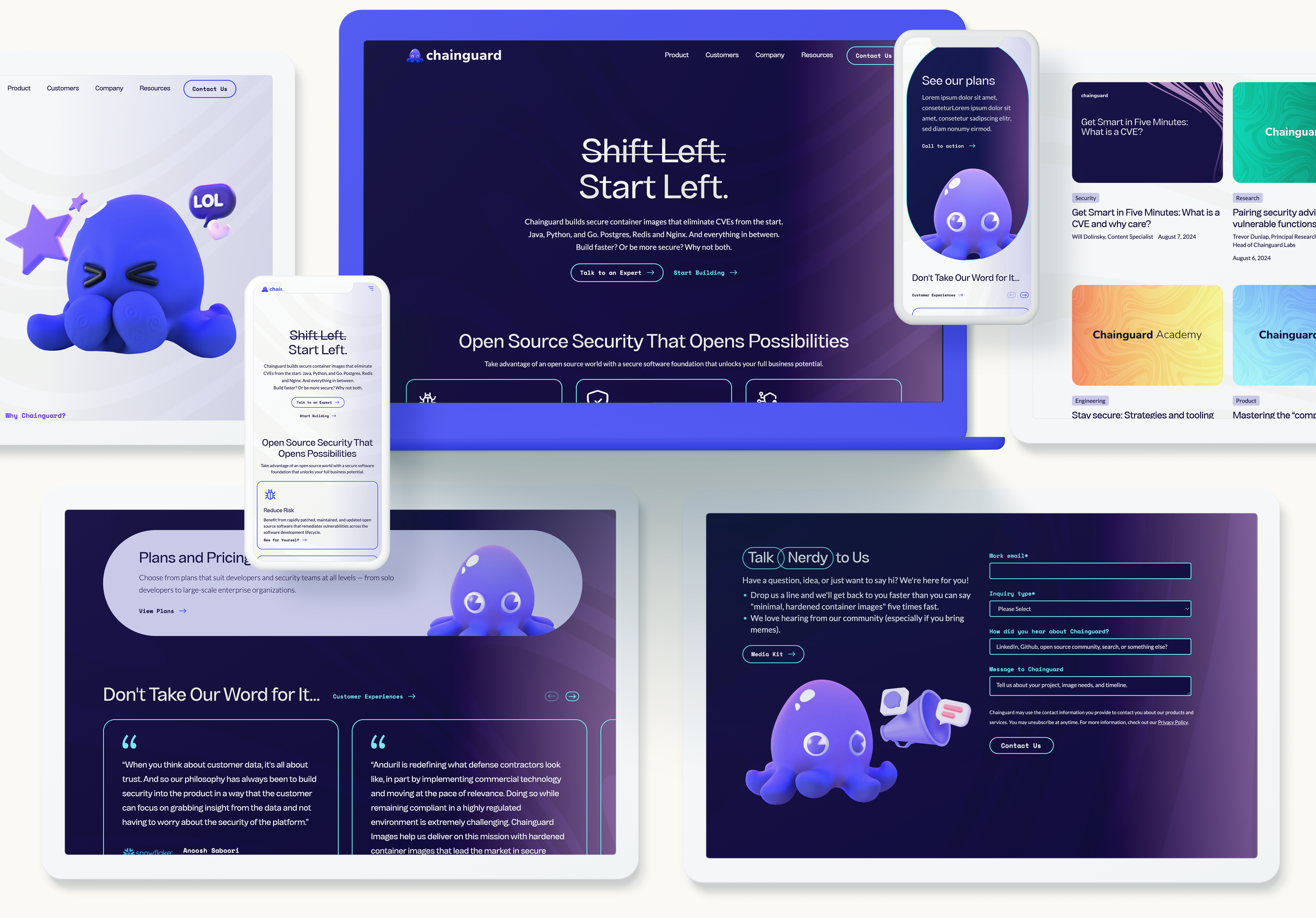
Communicate Innovation as a Practical Benefit
Innovation is often the first promise cybersecurity brands make—but not all brands know how to communicate it effectively. To make innovation resonate, connect your advancements directly to customer outcomes.
- Focus on Real-World Impact: Instead of advertising “next-gen AI” or “cutting-edge machine learning,” explain how these technologies detect previously unseen threats, reduce false positives, or improve response times.
- Simplify Complex Concepts: Use customer-friendly language and engaging formats like explainer videos, infographics, or live demos to illustrate your innovative capabilities.
- Highlight Your Team’s Expertise: Technology alone isn’t enough—customers value the people behind the solutions. Spotlight your engineers, researchers, and cybersecurity professionals to humanize your innovations.
Positioning your brand as an innovator ensures it remains top of mind for customers seeking modern solutions.

Establish Leadership Through Insightful Content
Thought leadership is one of the most powerful tools in the cybersecurity marketer’s toolkit. Customers look to trusted brands for guidance on navigating a rapidly evolving threat landscape. Use your unique expertise to shape industry conversations and position your brand as a leader:
- Host Webinars on Emerging Threats: Partner with industry experts to educate customers about new and evolving cyber risks.
- Publish Research and Whitepapers: Share data-driven insights on trends such as ransomware, phishing, or AI in cybersecurity.
- Engage in Online Discussions: Build your presence on platforms like LinkedIn and Reddit to connect with your audience directly and share valuable insights.
When your brand becomes a trusted source of information, it naturally rises above competitors who merely offer products or services.

Building a Cybersecurity Brand That Lasts
In today’s crowded market, a resilient cybersecurity brand goes beyond selling solutions. It builds relationships rooted in trust, offers innovations that solve real problems, and educates customers through thought leadership. These efforts don’t just help you stand out—they ensure your brand remains relevant as the cybersecurity landscape continues to evolve.
Looking to differentiate your cybersecurity brand and drive meaningful results? Bluetext specializes in crafting strategies that establish trust, showcase innovation, and build thought leadership for industry leaders. Contact us today to learn how we can help you stand out in the cybersecurity space.
In today’s digital age, data-driven marketing has become essential for businesses to thrive, enabling brands to tailor their messaging, predict customer needs, and enhance client experiences. For the financial services industry, however, data-driven marketing is both an opportunity and a challenge. While leveraging data can lead to improved customer engagement and retention, financial services firms operate in one of the most heavily regulated industries, with strict data protection and privacy guidelines that must be meticulously followed.
To succeed, financial marketers must adopt data-driven strategies that respect compliance standards, ensuring that all customer data usage aligns with regulatory expectations. This blog explores strategies for harnessing the power of data analytics in a way that enhances marketing efforts while staying within the bounds of regulatory compliance.
The Benefits of Data-Driven Marketing in Financial Services
Data-driven marketing is invaluable for financial services firms aiming to connect meaningfully with their audience. Here are key benefits that data can bring to this industry:
- Personalization
Data allows marketers to go beyond basic customer information, enabling hyper-targeted, personalized messaging based on individual preferences and behaviors. For financial services, this means delivering customized product recommendations, financial planning advice, or educational content that aligns with each client’s unique financial goals. - Predictive Insights
Predictive analytics uses historical data and trends to anticipate future customer needs. For example, by analyzing a client’s transaction history, firms can predict significant financial milestones, like retirement planning, and proactively offer relevant services. Predictive insights enhance the client experience, positioning the firm as a proactive advisor rather than a reactive service provider. - Enhanced Customer Retention
Retaining customers is often more cost-effective than acquiring new ones, and data analytics plays a crucial role in fostering loyalty. By tracking client interactions and satisfaction metrics, firms can identify at-risk clients and develop strategies to re-engage them through timely, targeted communication.

Navigating Regulatory Challenges
In a heavily regulated environment, financial services marketers must exercise caution in how they collect, process, and use customer data. Key regulations governing data privacy include:
- General Data Protection Regulation (GDPR): Applies to firms handling the data of European Union residents and mandates strict guidelines on data consent, access, and usage.
- FINRA Compliance: Financial Industry Regulatory Authority (FINRA) oversees financial firms to ensure ethical practices, including marketing communications.
- California Consumer Privacy Act (CCPA): Grants California residents rights over their data and applies to firms collecting data on California residents.
A compliance-focused approach to data is essential for financial services. This means establishing transparent data practices, securing explicit consent from customers, and adopting a culture of privacy by design. Additionally, regular audits are essential to ensure that data management practices align with evolving regulatory requirements.
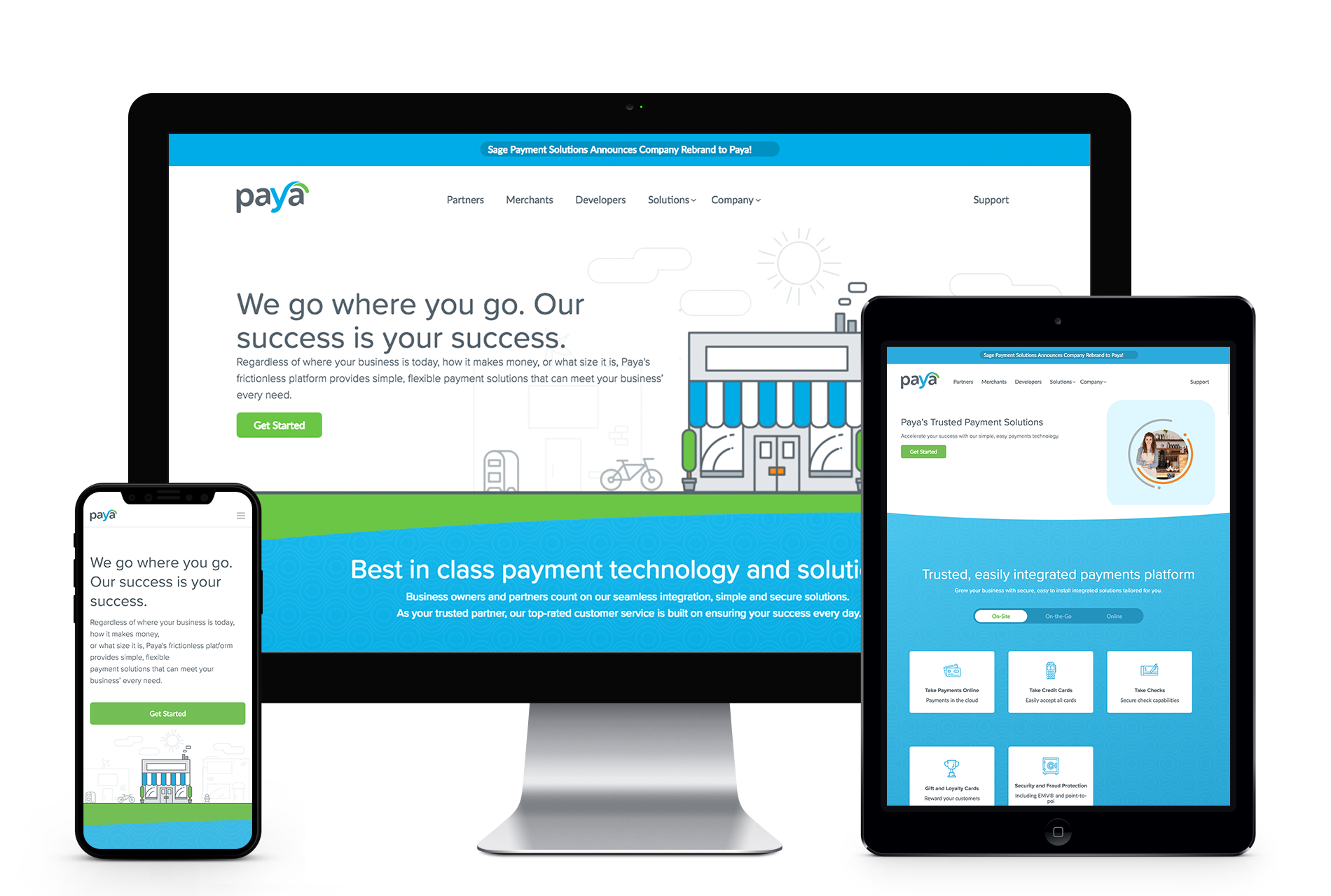
Key Data-Driven Marketing Strategies
Balancing regulatory constraints with effective data use can be challenging, but the following strategies allow financial marketers to harness the benefits of data analytics responsibly:
- Segmentation and Targeting
Using segmentation, financial firms can divide their audience into groups based on attributes like age, income, or account activity. Segmentation enables marketers to send targeted messages tailored to each group’s unique needs, improving campaign relevance and client engagement. - Omnichannel Personalization
Today’s customers interact across multiple channels—from social media to email to mobile apps. Omnichannel personalization ensures clients receive consistent, seamless experiences across platforms. For example, a customer viewing investment advice on your website might later receive a relevant email newsletter with complementary financial resources. - Predictive Analytics for Customer Lifecycle Management
Predictive analytics helps firms anticipate key moments in a customer’s lifecycle, such as significant life events or investment milestones. By identifying these opportunities, marketers can deliver timely offers or educational resources that address each client’s evolving needs, leading to stronger client relationships and higher lifetime value. - Data Quality and Security Measures
Data integrity is critical, especially in regulated industries. Implementing robust data quality measures—such as regular cleansing, validation, and secure storage protocols—ensures that the insights driving your marketing are both accurate and compliant. Utilizing secure platforms and encryption methods further safeguards client data, building trust and compliance with privacy laws.
Steps to Implement Data-Driven Marketing Safely
Implementing a data-driven strategy in a regulated world requires careful planning and coordination. Here are actionable steps to help financial firms adopt data-driven marketing safely:
- Build a Cross-Functional Team
Effective data-driven marketing requires collaboration between marketing, compliance, IT, and legal departments. By creating a cross-functional team, firms can ensure that campaigns are both innovative and compliant, benefiting from diverse expertise to navigate complex regulations. - Invest in Secure Data Infrastructure
Security is paramount when handling sensitive financial data. Investing in a secure data infrastructure, including advanced analytics platforms and encryption technology, protects client information and helps your firm meet regulatory requirements. Leading platforms offer built-in compliance tools, streamlining the process of adhering to data protection standards. - Develop Clear Data Governance Policies
Establishing clear policies on data collection, usage, and retention ensures that all employees understand the boundaries of data-driven marketing. Policies should include guidelines on obtaining consent, using data responsibly, and securely storing client information. Regular training and policy reviews help keep the team informed and compliant with any regulatory updates.

Embracing Data-Driven Marketing in a Regulated Landscape
Data-driven marketing offers financial services firms a powerful advantage in understanding and engaging clients more effectively. By focusing on customer segmentation, predictive analytics, and omnichannel personalization, firms can enhance their marketing while respecting the industry’s stringent regulatory standards. With careful planning and a commitment to compliance, financial firms can leverage data to build stronger client relationships, improve retention, and drive growth.
Looking to integrate data-driven marketing into your strategy? Contact Bluetext today for expert guidance on implementing effective, compliant data practices tailored to the financial services industry.
In today’s business environment, professional services firms face a unique challenge: balancing the tried-and-true methods of traditional marketing with the rapidly evolving demands of digital channels. The modern B2B buyer expects both personalization and accessibility, making a hybrid approach crucial for firms aiming to engage and retain clients effectively. For professional services firms rooted in traditional approaches, the shift to digital marketing can feel daunting—but it also represents an opportunity to connect with clients in meaningful new ways.
The Changing Landscape of B2B Marketing for Professional Services
Buyer expectations have changed significantly over the past decade. B2B decision-makers now prefer a blend of digital touchpoints, from educational webinars and engaging social media content to insightful blog posts and targeted email marketing. Traditional marketing approaches—such as in-person networking, relationship-building, and referrals—remain valuable. However, they no longer fulfill the full range of buyer needs, especially as many decision-makers now conduct extensive online research before even contacting a provider.
For professional services firms, the challenge is to create a seamless experience that combines digital and traditional interactions. Today’s B2B buyer expects convenience and immediacy, along with the depth and reliability associated with established brands. By carefully integrating digital channels, firms can strengthen client relationships while meeting modern expectations.

Core Challenges in Transitioning from Traditional to Digital
Transitioning to a hybrid marketing strategy is easier said than done. Many professional services firms face challenges that slow their adoption of digital methods:
- Resistance to Change: Established firms often have well-defined processes and are accustomed to traditional marketing’s tangible returns, like word-of-mouth referrals and direct networking. Embracing digital marketing can feel like stepping into unfamiliar territory.
- Measuring ROI: Digital marketing offers a wealth of data, but the learning curve can be steep. Many firms are uncertain about how to measure the return on investment (ROI) for digital campaigns, making it harder to justify shifting resources from traditional channels.
- Maintaining Client Trust and Expertise: For firms known for their expertise, there is a concern that digital methods could appear impersonal or detract from their credibility. Balancing the transparency and immediacy of digital content with a reputation for quality and trustworthiness can be tricky.
Key Strategies to Bridge the Gap
To navigate this shift, firms can employ specific strategies that bring the strengths of both traditional and digital marketing together.
- Leverage Data-Driven Insights
Digital marketing provides access to extensive data on customer behavior, preferences, and touchpoints, allowing firms to create highly personalized experiences. By analyzing this data, firms can gain insights into which strategies resonate most with their target audience and adjust accordingly. For instance, monitoring engagement with content like blogs, case studies, or newsletters can reveal client interests and needs, guiding future campaigns. - Incorporate Content Marketing
Thought leadership is central to building credibility, and digital channels offer an ideal platform for showcasing expertise. By developing valuable content—such as industry insights, how-to guides, and webinars—firms can engage their audience, nurture leads, and solidify their position as trusted advisors. This approach not only reaches clients digitally but also strengthens traditional relationships by providing clients with informative resources they can share and discuss in person. - Utilize Targeted Advertising
Digital advertising allows firms to target specific industries, job roles, or geographic areas with precision. Platforms like LinkedIn, which cater to professional audiences, offer advertising options tailored to reach relevant B2B decision-makers. Retargeting ads, which appear after someone has visited your site, can also keep your brand top-of-mind among potential clients, making this strategy highly complementary to traditional networking efforts. - Blend Offline and Online Experiences
Professional services firms can create memorable experiences by combining offline and online elements. For example, hosting an in-person event that is also live-streamed can engage both local clients and remote participants, expanding the reach of a traditional approach through digital channels. Similarly, webinars, which provide educational value and interaction opportunities, serve as digital extensions of traditional seminars and roundtables, offering clients flexibility in how they engage with your brand.
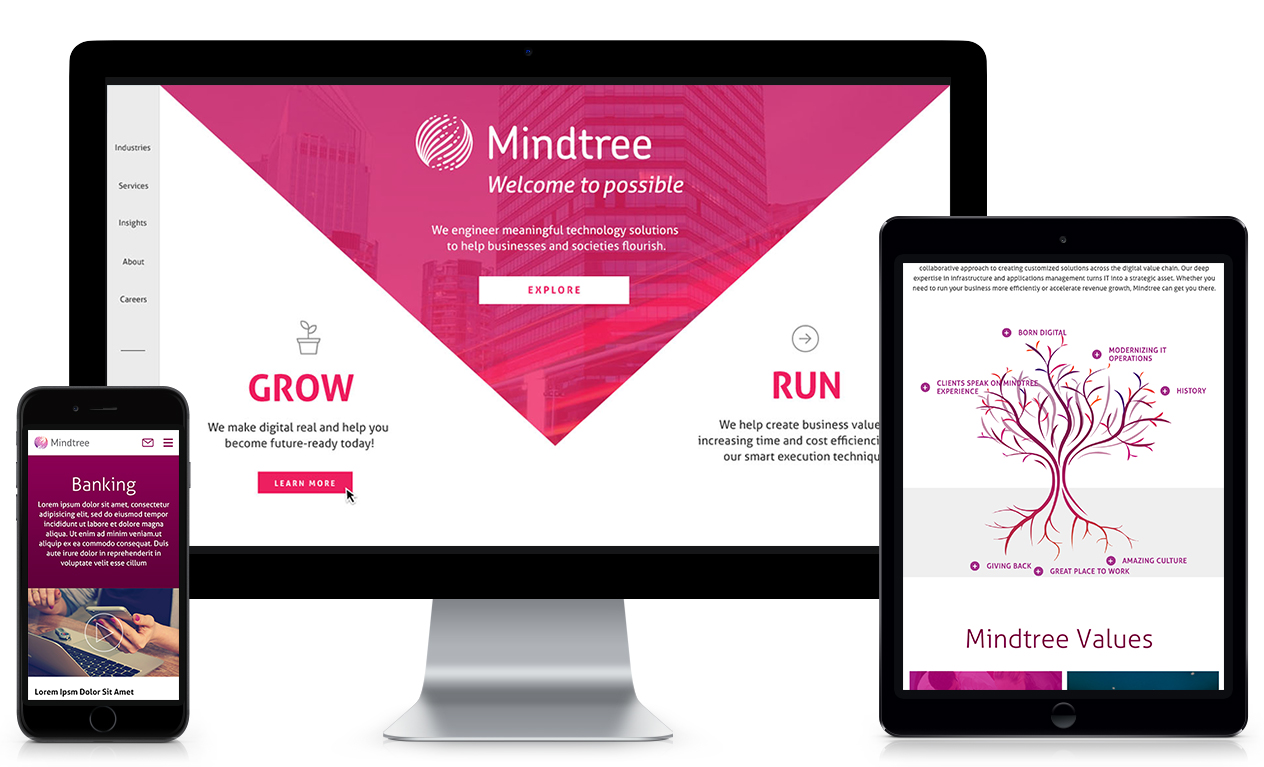
Steps to Get Started
For firms ready to bridge the gap, taking the first steps toward a hybrid marketing strategy can be streamlined with a structured approach:
- Conduct an Audit: Evaluate your current marketing efforts to identify gaps where digital tactics can complement traditional methods. Determine which areas are underperforming or could benefit from digital reinforcement.
- Identify Digital Opportunities: Consider where digital channels could amplify existing strengths. If your firm excels in thought leadership, start by building a content marketing program. If networking is central to your success, explore how LinkedIn advertising or webinars can enhance your reach.
- Set Clear Goals: Establish measurable goals for each digital channel, whether it’s to increase brand awareness, generate leads, or boost client engagement. Goals help justify the investment in digital and serve as benchmarks for success.
- Take a Phased Approach: Transitioning from traditional to digital is a journey. Consider rolling out digital initiatives in phases to ensure that each step is manageable and measurable. Start with a pilot project, gather feedback, and make adjustments before expanding.
- Commit to Continuous Improvement: Digital marketing requires adaptability. Regularly review data from campaigns, client interactions, and feedback to refine your approach and ensure alignment with both traditional values and digital expectations.
Embracing a Hybrid Future
For professional services firms, the shift to digital marketing represents an evolution in how they connect with and engage clients. By adopting a balanced approach, firms can preserve the strengths of traditional marketing while leveraging the efficiency and reach of digital methods. Ultimately, a hybrid strategy enhances relationships, drives engagement, and positions firms for long-term success in an increasingly digital world. Transitioning may feel challenging, but the rewards of a thoughtful blend of traditional and digital are well worth the effort.
Ready to take your marketing to the next level? Contact Bluetext today to learn how we can help you seamlessly bridge the gap between traditional and digital marketing.
In the subscription-based world of Software as a Service (SaaS), success hinges not only on acquiring new customers but also on retaining them. With recurring revenue as the backbone of the SaaS business model, retaining customers and reducing churn are critical for long-term growth and profitability. This blog explores key retention-focused marketing strategies that SaaS companies can adopt to foster customer loyalty, ensure continued engagement, and drive long-term success.
Understanding the Importance of Retention in SaaS
Retention is more than just keeping a customer—it’s about nurturing a relationship that continues to deliver value over time. Unlike traditional software sales, where the primary focus is on the initial purchase, SaaS companies thrive on recurring subscriptions. This makes retention a crucial metric. Not only does a high retention rate contribute to a stable revenue stream, but it also reflects customer satisfaction and the perceived value of the product.
Retained customers are more likely to become brand advocates, offering valuable word-of-mouth marketing and contributing to organic growth. Moreover, it costs significantly less to retain existing customers than to acquire new ones, emphasizing the economic advantages of a retention-focused strategy.

Crafting a Customer-Centric Onboarding Experience
The foundation of effective retention starts with onboarding. A seamless, intuitive onboarding experience ensures that new customers can quickly realize the value of the SaaS product. This critical phase sets the tone for the entire customer journey.
To optimize onboarding:
- Personalization is key: Tailor the onboarding process based on the customer’s industry, company size, or specific use case.
- Interactive guides and tutorials: Provide step-by-step instructions through interactive elements that help users become familiar with the software.
- Dedicated customer success teams: Assign customer success managers to guide new clients, address questions, and provide proactive support.
The goal is to minimize time-to-value (TTV)—the period it takes for customers to see the benefits of your software—and to set the stage for long-term engagement.
Leveraging Data-Driven Personalization for Engagement
In the subscription economy, personalization is essential for maintaining customer engagement. By leveraging data analytics, SaaS companies can gain deep insights into user behavior, preferences, and pain points, enabling them to tailor their offerings and communications.
Key strategies for data-driven personalization include:
- Behavioral triggers: Use in-app behavior to trigger personalized messages or recommendations. For instance, if a user frequently accesses a specific feature, provide advanced tips or related functionalities to deepen their usage.
- Segmented communication: Divide your customer base into segments based on factors like usage patterns, engagement levels, or industry. Craft targeted marketing messages that address the specific needs and goals of each segment.
- Feedback loops: Implement mechanisms for collecting user feedback regularly, using surveys, in-app prompts, or direct outreach. This helps in refining the product and demonstrating that customer input drives improvements.
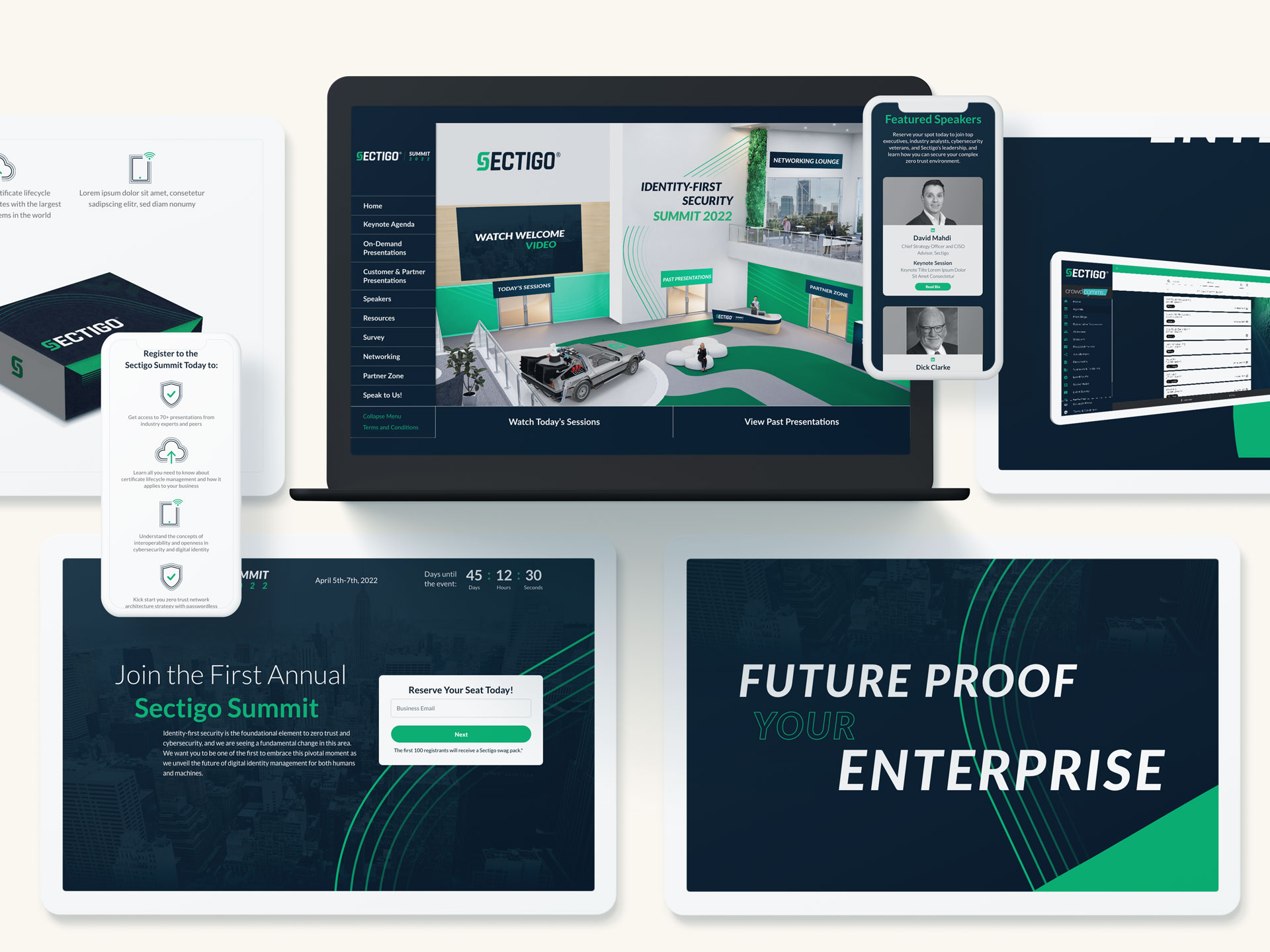
Implementing Customer Success Programs
Customer success programs are vital for maintaining ongoing engagement and ensuring that customers derive consistent value from the SaaS product. These programs are proactive, aiming to anticipate customer needs and address potential issues before they lead to churn.
Components of a successful customer success program:
- Regular check-ins: Schedule periodic reviews to discuss the customer’s goals, challenges, and how the software is helping achieve them.
- Educational resources: Provide access to webinars, training sessions, and resource libraries that help customers maximize their use of the product.
- Success metrics tracking: Collaborate with customers to define success metrics, track progress, and celebrate milestones.
Customer success teams act as a bridge between the SaaS company and its users, reinforcing the value of the subscription and cultivating loyalty.
Enhancing Product Value Through Continuous Innovation
In a competitive SaaS landscape, continuous product innovation is crucial for retaining customers. Regular updates, new features, and improvements demonstrate a commitment to delivering value and keeping pace with evolving customer needs.
To foster continuous innovation:
- Customer feedback integration: Actively incorporate customer feedback into the product development cycle. This not only improves the product but also shows customers that their input is valued.
- Transparent communication: Keep customers informed about upcoming features, updates, and improvements through newsletters, blog posts, or in-app notifications.
- Beta programs: Involve customers in beta testing for new features, creating a sense of ownership and investment in the product’s evolution.
By consistently enhancing the product, SaaS companies can prevent customer fatigue and maintain excitement around their offerings.

Utilizing Loyalty Programs and Incentives
Loyalty programs and incentives can be effective tools for encouraging long-term customer engagement. These programs reward users for continued subscription and usage, fostering a deeper connection with the brand.
Examples of loyalty initiatives include:
- Referral bonuses: Offer incentives for customers who refer new users, turning satisfied customers into active promoters.
- Usage-based rewards: Provide rewards or recognition for customers who consistently use the product or achieve certain milestones, reinforcing positive behavior.
- Tiered loyalty programs: Create a tiered system where customers can unlock additional benefits or features based on their subscription tenure or engagement level.
Such programs not only enhance retention but also contribute to customer satisfaction and brand loyalty.
Measuring and Reducing Churn
Retention efforts must be complemented by a strong focus on measuring and understanding churn. By identifying the reasons why customers leave, SaaS companies can take targeted actions to reduce churn rates.
Key strategies for managing churn:
- Churn analysis: Regularly analyze churn data to identify patterns and common reasons for cancellation.
- Exit interviews: Conduct interviews or surveys with customers who cancel to gain insights into their decision.
- Win-back campaigns: Develop campaigns aimed at re-engaging lost customers, offering special incentives or addressing previous concerns.
Continuous improvement in churn management can significantly impact overall retention rates, ensuring long-term sustainability for SaaS businesses.
Building a Retention-Driven SaaS Strategy
Retention is the cornerstone of success in the subscription economy. By focusing on personalized engagement, continuous innovation, and proactive customer success, SaaS companies can build lasting relationships with their customers. These strategies not only improve retention but also contribute to a healthier bottom line and a stronger brand reputation.
The healthcare industry is undergoing a digital revolution, with technology increasingly central to patient care, data management, and hospital operations. For healthcare technology firms, this transformation presents a unique opportunity to connect with hospitals, clinics, and healthcare networks. However, breaking through to this market demands a targeted approach that emphasizes trust, addresses sector-specific needs, and communicates real-world value. This post dives into actionable strategies for reaching B2B healthcare audiences and building partnerships that support the industry’s vital mission.
Understanding the B2B Healthcare Landscape
Unlike many other B2B sectors, the healthcare market is defined by strict regulations, a focus on patient outcomes, and multi-layered decision-making processes. Stakeholders in hospitals and healthcare networks are cautious about adopting new technology, primarily because of high-stakes concerns around patient safety, data privacy, and operational compatibility. To successfully navigate this landscape, healthcare technology firms need a deep understanding of these priorities and a commitment to building trust.
A critical first step is to recognize that decision-makers, from C-suite executives to department heads, are evaluating technology not only for its features but also for its ability to integrate seamlessly into existing infrastructures and improve long-term patient outcomes. Demonstrating an awareness of industry pain points—such as budget constraints, regulatory requirements, and the need for interoperability—sets a strong foundation for engaging these audiences.

Crafting Relevant Messaging for Healthcare Audiences
Effective healthcare marketing begins with messaging that speaks directly to healthcare providers’ specific concerns. Hospitals, clinics, and healthcare networks are focused on improving patient outcomes, reducing costs, and ensuring compliance with regulations. Marketing content that emphasizes these values will resonate far more than generic tech-driven language.
To appeal to healthcare professionals, highlight how your solution addresses critical challenges. For instance, a data analytics platform for hospitals might prioritize HIPAA compliance, seamless integration with electronic health records (EHR) systems, and real-time patient monitoring. Position your product as a partner in improving patient care rather than just another tech solution. Including testimonials, case studies, or data points that underscore proven results can enhance credibility and illustrate tangible benefits.
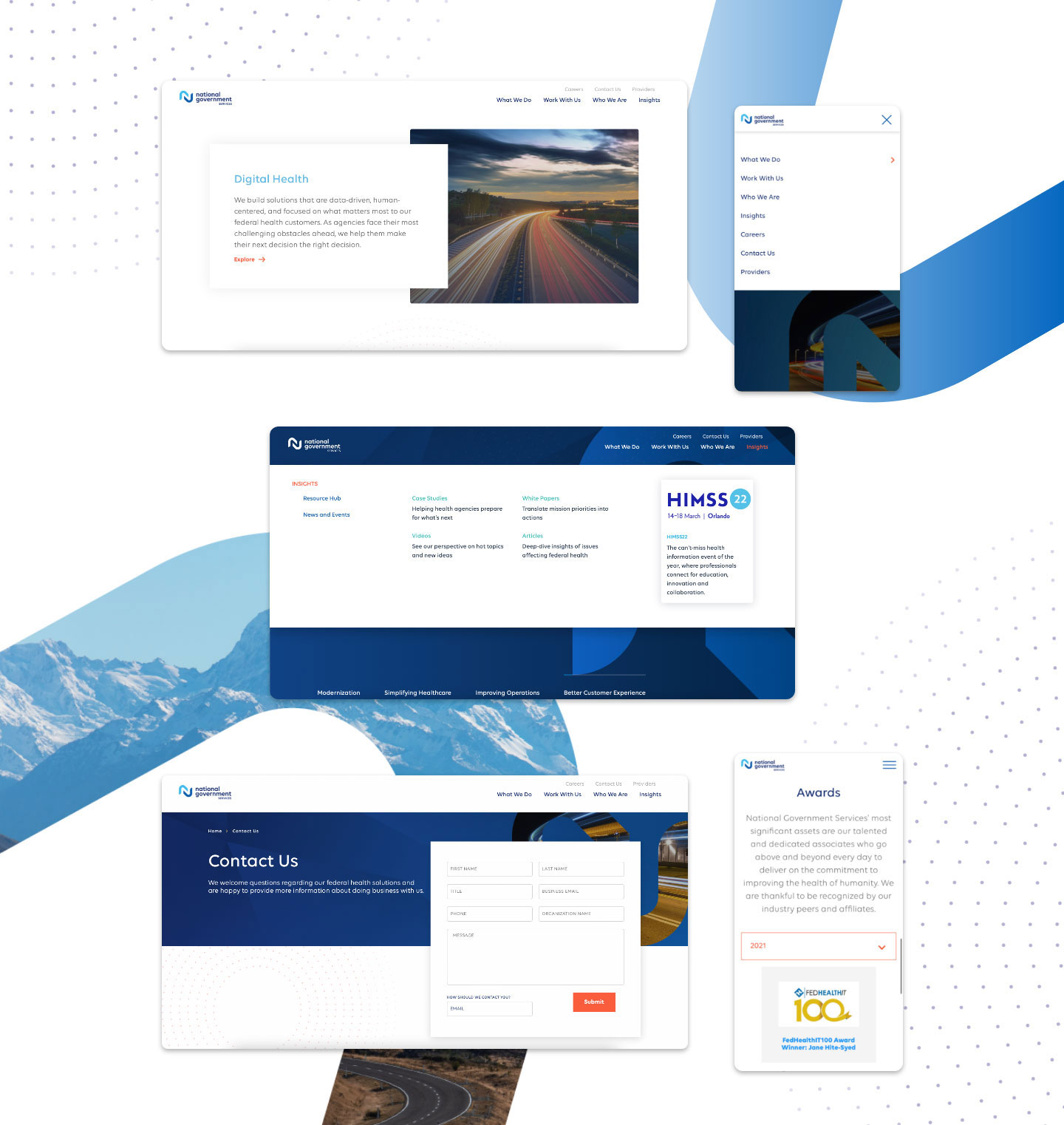
Building Digital Marketing Channels for Maximum Reach
Reaching healthcare decision-makers requires a strategic selection of digital channels, as traditional B2B approaches may not have the same impact. LinkedIn is essential for healthcare marketing, as it’s where professionals actively engage with industry-specific content. Utilize LinkedIn’s advanced targeting to reach executives, department heads, and procurement professionals who play a role in tech adoption decisions.
In addition to LinkedIn, hosting webinars tailored to the healthcare industry allows potential clients to engage with your product directly. Consider creating webinars focused on regulatory compliance, cost savings, or enhanced patient care enabled by your technology. This format not only provides an opportunity to answer questions in real-time but also builds trust by demonstrating your team’s knowledge of healthcare needs.
Email campaigns remain highly effective but should be crafted carefully to avoid information overload. Segmenting email lists by role—such as clinical leadership, IT administrators, and procurement officers—enables you to send tailored content that speaks to each audience’s specific priorities. Whitepapers and in-depth case studies can also be promoted through email, providing a resource that healthcare professionals can review at their own pace.
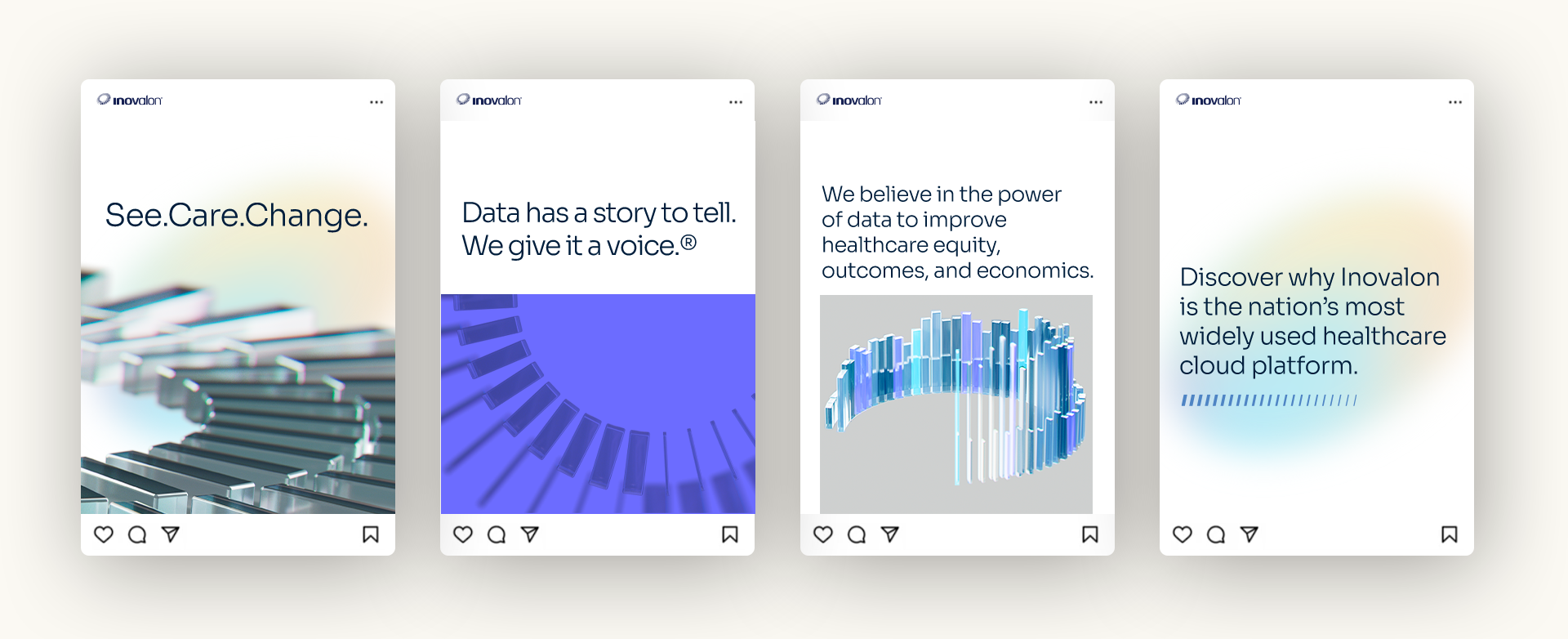
Leveraging Thought Leadership and Content Marketing
In healthcare marketing, establishing authority through thought leadership is critical. Thought leadership shows that your brand is not only knowledgeable but committed to contributing to the broader conversation around healthcare improvements. Regularly publishing informative, research-backed content—whether through blogs, industry journals, or social media—can help position your firm as an industry authority.
To create impactful thought leadership, address current healthcare challenges in your content, such as data security concerns, the shift toward value-based care, or the role of artificial intelligence in diagnostics. Collaborating with healthcare professionals for interviews, insights, or guest articles can also lend credibility and provide authentic perspectives that resonate with readers.
Whitepapers, case studies, and research reports are particularly valuable, as healthcare decision-makers tend to rely on in-depth analysis when considering new solutions. Distributing these materials on your website, via email campaigns, or through targeted LinkedIn ads can increase visibility among your ideal audience.
Optimizing for Mobile and Digital Health Trends
Healthcare professionals are increasingly reliant on mobile technology, both for patient interactions and professional information. Marketing content optimized for mobile devices can make a substantial difference in engagement, as busy healthcare professionals often access information on the go. Mobile-friendly design, short-form video content, and infographics cater to these needs by providing digestible, quick-access information.
Digital health trends, such as telemedicine and wearable health tech, are on the rise and impacting how healthcare organizations approach patient care. By aligning your marketing strategy with these trends, your brand can present itself as forward-thinking and attuned to the future of healthcare. For instance, case studies that explore successful telehealth implementations can resonate with hospitals considering similar initiatives.
Consider creating educational resources that highlight how your technology aligns with these digital trends. By positioning your product as an enabler of mobile and digital health solutions, you appeal to organizations focused on meeting modern healthcare demands.

Measuring and Adapting Strategies
For healthcare marketers, data-driven insights are essential for refining strategies and proving ROI. Measuring metrics like lead generation, engagement rates, and conversions can shed light on what resonates with healthcare audiences and where adjustments are necessary. Establish a feedback loop that gathers insights from sales teams, client feedback, and industry developments to continuously optimize your approach.
In addition to quantitative metrics, qualitative feedback from healthcare clients can provide invaluable insight. Healthcare technology is a fast-evolving field, and understanding the specific preferences and pain points of your target audience helps you stay ahead of the curve. Regularly reviewing and adapting your strategies based on these insights demonstrates your firm’s commitment to understanding and meeting the needs of healthcare providers.
Building Lasting Connections in Healthcare Marketing
As healthcare technology continues to evolve, the opportunities to create lasting connections with hospitals, clinics, and healthcare networks will only expand. With the right approach—rooted in credibility, tailored messaging, and an understanding of industry trends—healthcare marketers can effectively reach and resonate with their target audiences. Adopting a digital-first mindset and embracing mobile, data-driven strategies will further enhance your ability to engage this essential market.
As the marketing landscape continues to evolve at a breakneck pace, businesses must look ahead to stay competitive in the years to come. By 2025, the strategies that once worked will need to be adapted to meet new expectations and leverage emerging technologies. From AI-driven personalization to sustainability in brand messaging, the future of marketing will be shaped by innovation, agility, and a deep understanding of consumer preferences.
In this blog, we’ll explore the key trends that will drive marketing success in 2025 and provide actionable steps businesses can take today to future-proof their marketing efforts.
The Power of AI-Driven Personalization
Artificial intelligence (AI) is transforming marketing by enabling hyper-personalized customer experiences at scale. AI tools can analyze vast amounts of customer data, allowing brands to predict behavior, deliver tailored content, and create highly relevant recommendations. This level of personalization not only enhances customer satisfaction but also fosters brand loyalty.
For instance, companies like Netflix and Amazon have mastered the art of AI-driven personalization, delivering content and product recommendations based on user preferences and behavior. As we approach 2025, consumers will expect this kind of personalized experience from every brand they interact with.
Actionable Step: Invest in AI-powered marketing tools that allow you to gather and analyze customer data effectively. Start by integrating AI into your email marketing, content delivery, and e-commerce platforms to offer personalized recommendations and improve engagement.
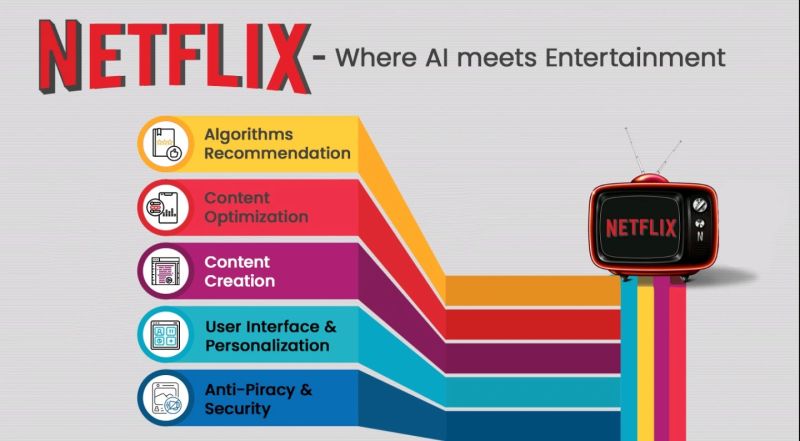
Omnichannel Customer Experiences
In 2025, the line between online and offline experiences will blur even further, with customers expecting seamless interactions across multiple touchpoints. An omnichannel marketing strategy ensures that no matter where your audience engages with your brand—whether it’s through social media, email, in-store, or mobile apps—the experience feels unified and consistent.
Leading brands are already embracing omnichannel strategies to create frictionless experiences. For example, Starbucks’ mobile app integrates with in-store interactions, allowing customers to order ahead, earn rewards, and pay seamlessly. This kind of cohesive approach will be crucial to staying competitive.
Actionable Step: Begin mapping out your customer journey to identify where your audience engages with your brand. Develop a strategy that ensures a consistent brand message and customer experience across all platforms and devices.
Embracing Sustainability in Brand Messaging
As consumers become more socially conscious, sustainability is no longer a nice-to-have but a necessity for brands looking to build trust and loyalty. By 2025, sustainability will be a key driver of purchase decisions, with customers seeking out brands that align with their values, particularly regarding environmental and ethical concerns.
Brands like Patagonia and Allbirds have built their entire ethos around sustainability, and their transparent, eco-friendly practices resonate deeply with today’s consumers. As environmental concerns grow, incorporating sustainability into your marketing messaging will become even more critical.
Actionable Step: Assess your brand’s current sustainability efforts and look for ways to authentically integrate these values into your marketing. Share your sustainability initiatives openly, whether through product development, sourcing, or corporate social responsibility.

Investing in Data Analytics for Better Decision-Making
Data will continue to be the lifeblood of effective marketing strategies in 2025. Brands that harness the power of data analytics will be better equipped to make informed decisions, predict trends, and tailor their campaigns to meet customer expectations. The ability to access real-time insights and predictive analytics will set top performers apart from the competition.
However, with the rise of data privacy regulations, businesses must also be mindful of how they collect and use customer data. Ethical data practices will be critical in building trust with consumers who are increasingly concerned about privacy.
Actionable Step: Invest in advanced data analytics tools and teams to improve your ability to make data-driven decisions. Ensure your data collection processes are transparent and ethical, and prioritize data security to build consumer trust.
Refining Digital Transformation Strategies
Digital transformation isn’t a one-time event—it’s an ongoing process that must evolve alongside new technologies and customer behaviors. As we look toward 2025, businesses that remain agile and continue to refine their digital transformation strategies will be better positioned to succeed.
Mobile-first approaches, automation, and digital agility will be essential in delivering the seamless experiences customers expect. Brands that fail to evolve their digital capabilities risk falling behind competitors who embrace the latest innovations in digital marketing.
Actionable Step: Continuously assess your digital channels and invest in technologies that enable you to deliver personalized, mobile-first experiences. Stay on top of emerging trends and be prepared to pivot your digital strategies as needed.
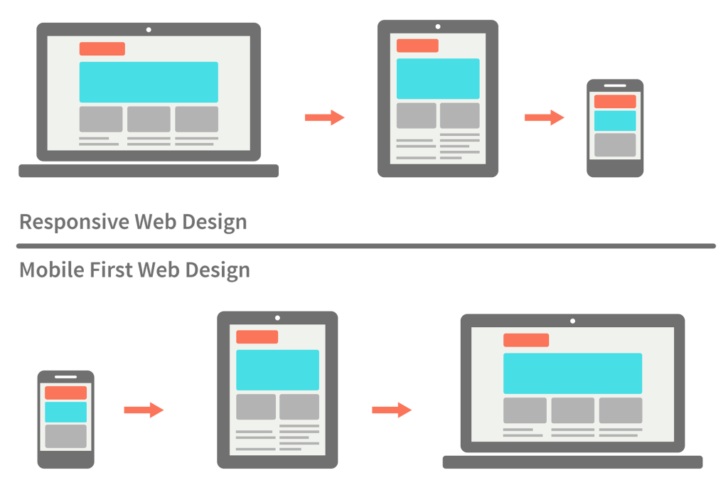
Embracing Ethical Marketing Practices
In 2025, consumers will increasingly favor brands that operate with transparency, inclusivity, and ethical values. Ethical marketing goes beyond avoiding misleading ads—it’s about building long-term trust through honesty, accountability, and a commitment to doing good.
Brands that embrace ethical marketing practices will resonate more deeply with today’s socially conscious consumers. This includes promoting diversity and inclusion, supporting social causes, and being transparent about business practices.
Actionable Step: Review your marketing practices and ensure they align with ethical standards. Be transparent about your brand’s values, and show genuine support for causes that matter to your audience. This will help build long-term loyalty and trust with your customers.
Agility and Innovation: The Cornerstones of Future Marketing
The future of marketing belongs to brands that can adapt quickly to change and foster a culture of innovation. Whether it’s responding to new consumer behaviors, pivoting during a crisis, or leveraging emerging technologies, agility will be key to staying competitive in 2025.
Agile marketing allows teams to iterate quickly, test new ideas, and respond to real-time feedback. Brands like Spotify and Nike have shown how an agile approach enables them to stay ahead of trends and maintain a strong connection with their audience.
Actionable Step: Build an agile marketing team by fostering a culture of experimentation and innovation. Encourage your team to test new ideas, iterate quickly, and adapt to changes in the marketplace.
Take the First Steps Toward Future-Proofing Your Marketing
As the marketing landscape continues to evolve, businesses that embrace AI-driven personalization, omnichannel experiences, sustainability, and ethical marketing will be well-positioned for success in 2025. But to stay competitive, brands must also remain agile and open to innovation.
Contact Bluetext today to start future-proofing your marketing strategies and ensure your brand is ready to thrive in the years to come.
In today’s digital landscape, social media is a double-edged sword. While it offers brands a powerful platform to connect with their audience, build loyalty, and amplify their messaging, it also leaves them vulnerable to potential crises that can erupt at a moment’s notice. A single misstep or unforeseen event can spark a wave of negative sentiment, threatening to tarnish even the most reputable brands. But with the right strategic approach, brands can not only survive a social media crisis but come out stronger on the other side.
Identifying a Social Media Crisis
Not every negative comment or tweet requires a full-scale crisis response. The first step in successfully navigating a crisis is distinguishing between regular feedback and an actual crisis.
A crisis often involves:
- High volume: A sudden spike in negative comments or mentions across platforms.
- Speed of escalation: The issue spreads rapidly, gaining traction beyond the original audience.
- Virality potential: If left unaddressed, the situation threatens to go viral, reaching a broader, more public audience.
Examples include high-profile product failures, missteps in brand communication, or controversial statements. Brands like Pepsi and United Airlines, for instance, have both faced massive public backlash on social media due to tone-deaf campaigns or mishandled customer service situations. Recognizing when a crisis is looming allows brands to act quickly and mitigate damage.
Preparing for a Crisis
While it’s impossible to predict when or how a crisis will strike, preparation is the key to navigating one effectively. Building a strong crisis management foundation starts with assembling the right team. This team should include representatives from PR, customer service, legal, and social media—each bringing a unique perspective and skill set to handle various facets of the crisis.
Steps for Preparation:
- Create a Crisis Communication Plan: Outline key response protocols, designate spokespersons, and define roles and responsibilities. Ensure your team knows who will be responsible for monitoring social media, crafting responses, and handling media inquiries.
- Use Social Listening Tools: Proactive monitoring through tools like Brandwatch, Hootsuite, or Sprout Social can help you track brand sentiment and spot potential issues before they explode.
- Set Up Response Protocols: Define clear guidelines on when and how to respond. Decide what situations warrant a public statement versus a direct, private outreach. Be prepared to issue holding statements while gathering more information.
Having a structured plan in place will allow your team to act swiftly and effectively when a crisis arises.
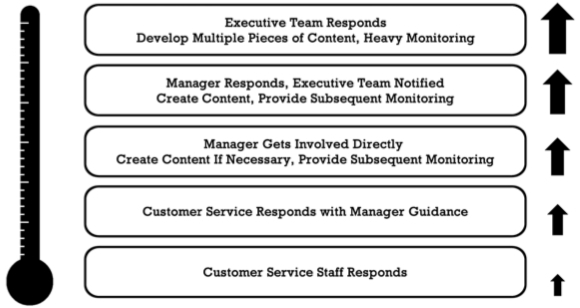
Responding to a Social Media Crisis
When a social media crisis hits, timing is everything. The first few hours are crucial in shaping how the public perceives the brand’s response. While it may be tempting to react immediately, it’s important to balance speed with care.
Here’s how to approach your response:
- Acknowledge the Issue: Silence can be perceived as negligence or indifference. Acknowledge the crisis as soon as possible, even if you don’t have all the answers yet. This shows that you are aware of the situation and are working on a resolution.
- Be Empathetic and Accountable: Demonstrate genuine concern for your audience’s feelings. Apologize when necessary and take accountability for any mistakes made. Avoid deflecting blame, as this can further damage your brand’s reputation.
- Tailor Your Message by Platform: Craft your responses in a way that fits each platform’s tone and audience. Twitter requires short, concise updates, while LinkedIn or Facebook may allow for more detailed explanations.
- Coordinate Internal Communication: Ensure that all teams, from customer service to legal, are aligned on messaging. Mixed or conflicting responses can confuse the public and worsen the crisis.
Avoid common mistakes such as arguing with individuals online or issuing insincere apologies. Always remember that public perception is shaped not only by the problem itself but by how your brand handles it.
Turning Crisis into Opportunity
Though social media crises are challenging, they also present an opportunity to demonstrate your brand’s values, transparency, and resilience. How you respond can help rebuild trust with your audience, and, in some cases, even strengthen your relationship with them.
Some strategies to leverage a crisis as an opportunity include:
- Show Transparency: Keep the public informed as you work to resolve the issue. Share updates on what’s being done to fix the problem and be open about what went wrong.
- Demonstrate Accountability: Show that you’re taking steps to address the root cause of the crisis and are making changes based on feedback. For example, after a backlash over offensive messaging, a brand might publicly commit to revisiting its marketing guidelines.
- Rebuild Trust: Once the dust has settled, highlight the improvements made. Show that your brand has learned from the crisis and is taking proactive steps to avoid similar issues in the future.
Brands like Domino’s Pizza have successfully bounced back from crises by owning up to their mistakes and making tangible changes to their business.
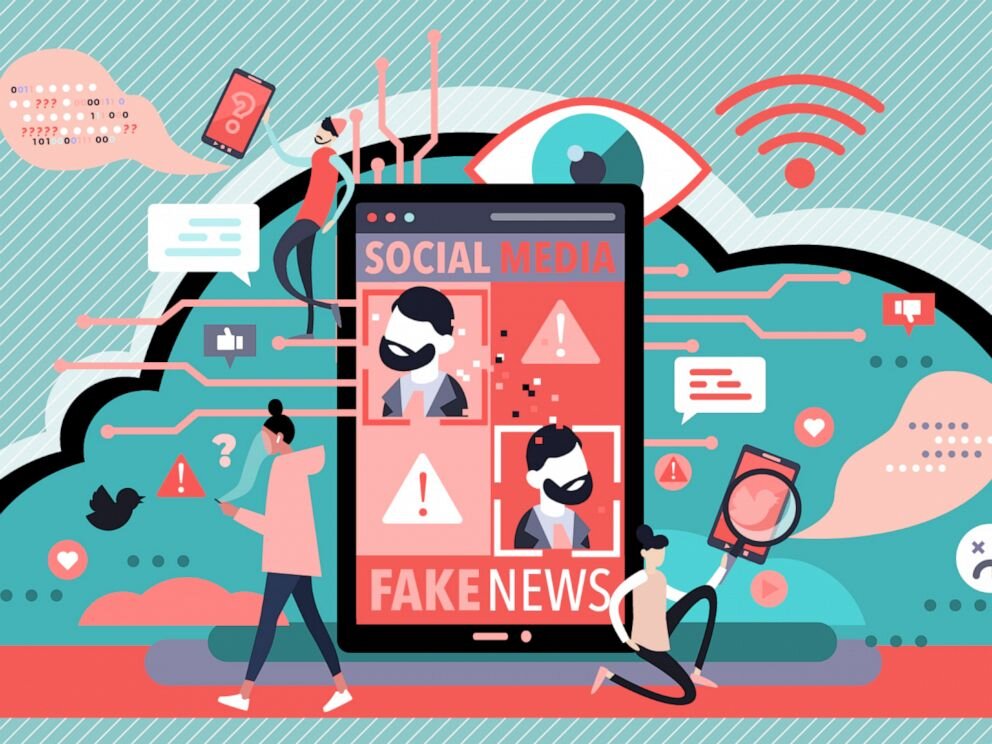
Post-Crisis Evaluation
The work doesn’t end once the crisis has passed. A post-crisis evaluation is essential to learn from the experience and prepare for future challenges. Start by analyzing the overall sentiment recovery. Did the brand manage to restore trust? How was the crisis handled internally?
Key areas to evaluate include:
- What went right, and what went wrong?: Assess the effectiveness of your communication strategy, your team’s responsiveness, and the tools you used for monitoring.
- Adjust Your Crisis Communication Plan: Based on your evaluation, make any necessary updates to your crisis communication plan to be better prepared next time.
- Ensure Long-Term Reputation Management: Continue to monitor your brand’s perception post-crisis and focus on maintaining positive engagement with your audience.
Take Control of Your Social Media Strategy
In today’s fast-paced digital world, a social media crisis can strike at any time. But with preparation, strategic communication, and a strong response plan, brands can navigate these challenges with confidence. Don’t leave your brand’s reputation to chance—partner with experts who can help you manage crises and build lasting trust with your audience.
Contact Bluetext today to ensure your brand is ready to handle any crisis with a tailored social media strategy that protects and strengthens your reputation.
In today’s hyper-competitive market, Software-as-a-Service (SaaS) companies are often challenged to scale quickly and globally. While this growth presents immense opportunities, it also requires an equally robust content marketing strategy that can adapt and thrive across diverse markets. Developing a scalable content marketing framework is key to ensuring your messaging resonates with a global audience while maintaining consistency and efficiency.
In this post, we’ll explore how to create scalable content marketing frameworks that drive global growth for SaaS companies, from building a foundation to leveraging automation and cross-functional collaboration.
Why a Scalable Framework is Key for Global SaaS Growth
For SaaS companies, scalability isn’t just a technical or product-related goal—it applies to marketing as well. Content plays a crucial role in driving awareness, engagement, and conversion throughout the customer journey. However, scaling this content globally presents unique challenges. How can a company ensure a consistent brand voice while localizing content for different regions and cultures? How do you manage the sheer volume of content needed to reach multiple markets?
A scalable content marketing framework solves these challenges by creating a structure that allows for growth while maintaining efficiency. Such a framework ensures that content can be easily adapted, replicated, and distributed across multiple regions while still meeting local market demands.
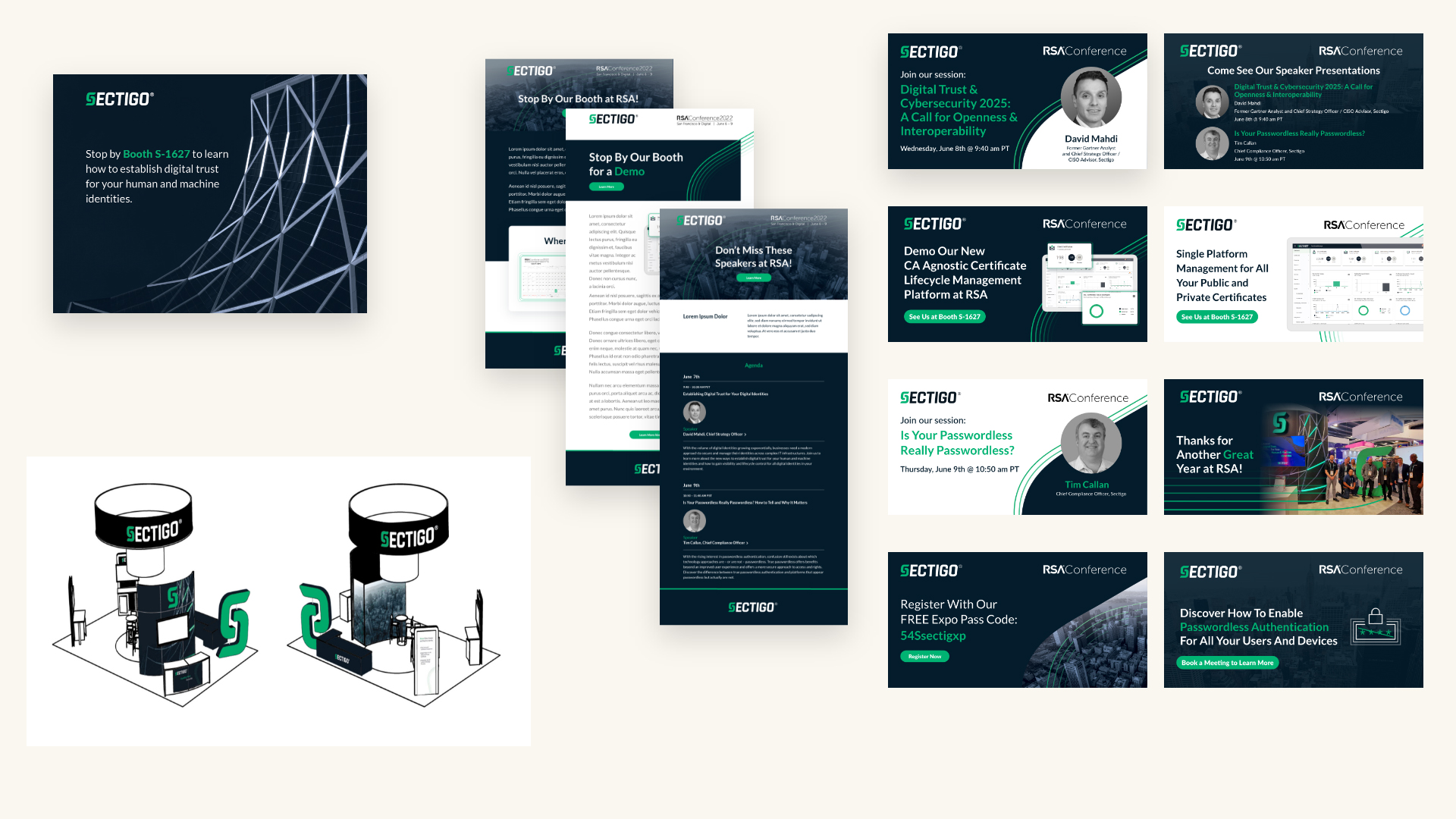
Developing a Scalable Content Marketing Framework
Creating a scalable content marketing framework starts with a solid foundation that supports global and local efforts. Here are the key components:
1. Building Blocks for Scalability
- Core Messaging: Your brand’s core messaging and value proposition must be clearly defined and consistent across all markets. This includes identifying key themes, target audience pain points, and the benefits your product provides. Ensure this messaging is flexible enough to be adapted to different cultural contexts.
- Content Pillars: Establish core content pillars that reflect your SaaS product’s benefits and use cases. These pillars should guide the creation of evergreen content (such as blog posts, guides, and whitepapers) that can be repurposed for different regions with minor adjustments.
- Templates and Modular Content: Build templates for common content types like case studies, blog posts, landing pages, and emails. Modular content allows you to maintain consistency across global markets while making localized tweaks to suit regional preferences.
2. Localization Without Losing Brand Consistency
One of the key challenges for global SaaS companies is balancing the need for consistent brand messaging with the nuances of different regions. A scalable framework allows for localization while retaining the essence of your brand.
- Localized Content Strategy: Develop content that is tailored to each region’s language, cultural nuances, and business environment. For example, what resonates with audiences in the U.S. may need to be adapted for European or APAC markets in terms of tone, references, and even the types of content that perform best.
- Maintain a Unified Brand Voice: Ensure your global team understands the importance of a consistent brand voice. Even as content is localized, the core values and personality of your brand should remain intact. This is especially critical when working with regional content creators or agencies.
3. Content for Every Stage of the Customer Journey
To effectively scale content marketing, it’s essential to map content creation to each stage of the SaaS customer journey—from awareness to purchase, onboarding, and retention. A well-planned framework ensures you produce content that not only generates leads but also supports customer success and reduces churn.
- Awareness Stage: Educational content such as blog posts, guides, and videos that introduce prospects to your product’s value. These pieces can be easily localized and repurposed globally.
- Consideration Stage: More in-depth content like case studies, webinars, and whitepapers that help potential customers evaluate your product’s fit for their needs.
- Decision Stage: Content that addresses specific objections or product comparisons. At this stage, localized versions of case studies and testimonials can be extremely effective.
- Retention Stage: Content that supports customer success, such as user guides, product updates, and educational webinars tailored to specific regional use cases.
Leveraging Data and Automation to Scale Content
As your content efforts grow globally, manually managing and personalizing content for different markets becomes increasingly challenging. This is where data and automation come into play.
- Data-Driven Insights: Use analytics to track the performance of content across different markets and regions. This data can guide your content strategy, helping you understand what works best in each location and refining your approach over time.
- Automation Tools: Content management systems (CMS) and marketing automation platforms are critical for scaling efficiently. Automation allows you to streamline content distribution, enabling you to schedule and deploy content across multiple channels and regions simultaneously. It also helps personalize content at scale, so your audience receives relevant messaging without the need for manual intervention.
- Personalization at Scale: While global consistency is essential, personalized content resonates more with audiences. Leverage automation tools to create personalized experiences that align with the customer’s location, industry, and stage in the buyer’s journey. This ensures a relevant and engaging experience, even at scale.
Collaborating with Cross-Functional Teams
Scaling content marketing globally requires close collaboration across departments, from marketing and sales to customer success. When these teams are aligned, your content can better support each stage of the customer lifecycle, from lead generation to customer retention.
- Sales Alignment: Collaborate with sales teams to ensure content addresses the needs and objections they encounter in conversations with prospects. Sales can also provide insights into regional differences in buyer behavior, which is crucial for localized content.
- Customer Success Integration: Your content doesn’t stop after a customer signs up. Work closely with the customer success team to develop content that helps onboard, educate, and retain customers. This includes user guides, product tutorials, and tailored educational materials.
- Internal Stakeholders: Engage internal stakeholders, such as regional marketing teams, to ensure that content not only aligns with global goals but also meets the unique needs of each market. Having buy-in from regional teams ensures smoother localization and implementation.
Measuring the Success of a Scalable Content Marketing Framework
To ensure your content marketing framework is effective, it’s important to establish clear metrics for success. These metrics will vary depending on the goals of your content strategy but often include:
- Content Performance: Track engagement metrics such as page views, time on page, and social shares to evaluate which content resonates most with your audience.
- Lead Generation: Monitor how effectively your content is driving qualified leads across different regions.
- Conversion Rates: Measure the impact of your content on conversion rates, from leads to paying customers.
- Customer Retention: Analyze how content supports customer retention efforts, such as reducing churn or increasing product adoption.
By continuously tracking and optimizing these metrics, you can refine your content marketing framework to ensure it scales effectively as your SaaS company grows.

Ready to Scale Your SaaS Content Marketing Globally?
Developing a scalable content marketing framework is crucial for SaaS companies aiming for global growth. By focusing on core messaging, localization, automation, and cross-functional collaboration, you can create a framework that allows your content strategy to scale efficiently across regions, driving engagement and conversions at every stage of the customer journey.
At Bluetext, we specialize in building scalable content marketing frameworks that drive global growth for SaaS companies. From core messaging to localization and automation, we can help you create a strategy that resonates with audiences across markets while maintaining consistency.
Holograms have long been associated with science fiction, from the iconic scenes in Star Wars to Tony Stark’s advanced interfaces in Iron Man. But today, what was once fantasy is fast becoming a reality. Holographic technology is moving beyond entertainment and into the world of marketing, offering brands a cutting-edge way to create captivating, immersive experiences that leave a lasting impression on consumers.
In this blog, we’ll explore how brands are using holograms in visual advertising, the benefits of this futuristic medium, and where it’s headed in the near future.
The Role of Holograms in Pop Culture
Before diving into the marketing applications, it’s important to recognize how holograms have already captured the public’s imagination through pop culture. One notable example is their use in the music industry.
In 2012, the world was stunned when a hologram of the late rapper Tupac Shakur performed at the Coachella music festival. This groundbreaking performance introduced the potential of holographic technology to resurrect beloved artists in a way that felt incredibly real. The music industry continued to embrace this technology when ABBA launched their “ABBA Voyage” concerts in 2022. Using holograms of the band in their prime, the concert experience allowed fans to enjoy a futuristic show where the performers looked as they did decades ago. These examples illustrate how holograms are evolving beyond novelty to become a tool for deep emotional connections, nostalgia, and immersive experiences.

Why Holograms? The Allure of Futuristic Advertising
Holograms offer an alternative to traditional 2D advertising by creating three-dimensional images that appear to float in midair, creating a sense of wonder and intrigue. For brands, this futuristic touch not only captures attention but also resonates deeply with tech-savvy and younger audiences.
The novelty factor of holograms can elevate a brand’s message, making it stand out in crowded environments like trade shows, product launches, or even on digital platforms. A hologram that interacts with the audience or a product can transform a static ad into a dynamic, memorable experience that builds a stronger connection between the brand and consumer.
How Brands Are Using Holograms in Advertising
Brands across industries are beginning to embrace holographic technology to create stunning, interactive marketing experiences. For example:
- Nike used holograms in-store to create a floating, life-sized display of their latest sneakers, allowing shoppers to see every angle of the product without physically touching it.
- Coca-Cola utilized holographic billboards that projected 3D images of their iconic soda bottle, making it appear as though the bottle was being poured into thin air.
- Samsung has integrated holograms into their product launches, giving audiences a detailed 360-degree view of their latest phones, enhancing the product reveal.
From retail environments to public events, holograms allow brands to engage with consumers in a way that feels fresh and innovative.
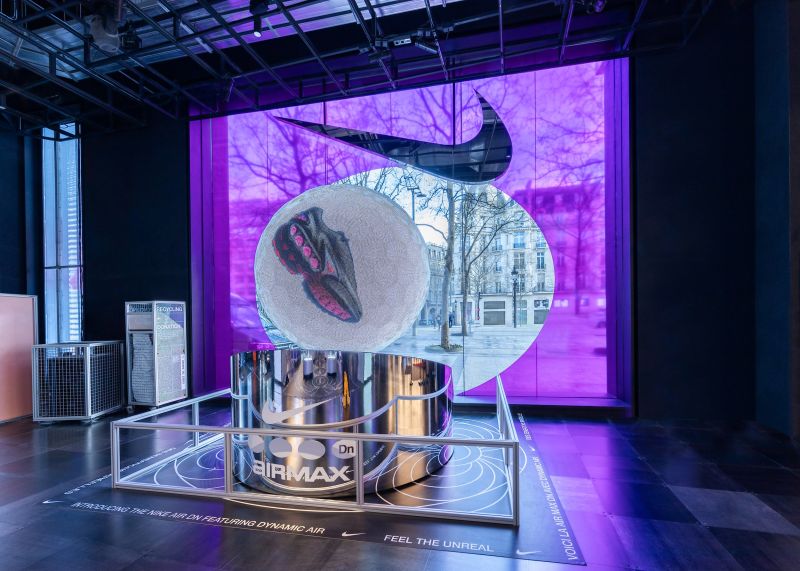
Benefits of Holographic Advertising
What makes holograms so effective as an advertising tool? Here are some key benefits:
- Immersive Experiences: Holograms offer a level of interactivity and immersion that traditional ads can’t match. They allow consumers to engage with products and branding in a 3D space, making the experience more memorable.
- Increased Engagement: The wow factor of holograms naturally attracts attention, pulling people in to interact with the content. This leads to higher engagement rates compared to static ads.
- Brand Differentiation: Holograms are still relatively new in the marketing space, which gives early adopters the chance to stand out from the competition and position themselves as innovative, forward-thinking brands.
Challenges and Considerations
While holographic technology holds immense promise, there are some challenges to consider:
- Cost: High-quality holographic displays require advanced technology and equipment, which can be expensive for some brands. However, as the technology becomes more mainstream, these costs are expected to decrease.
- Technical Barriers: Implementing holographic displays often requires specialized knowledge and equipment. Setting up large-scale holograms for events or retail spaces can be technically complex.
- Environmental Limitations: While holograms thrive in controlled indoor settings, outdoor use can pose challenges due to light interference or environmental conditions.
The Future of Holographic Advertising
As technology continues to advance, holographic advertising is likely to become even more widespread. The next 5-10 years could see holograms integrated with augmented reality (AR) and virtual reality (VR), creating even more immersive and interactive experiences. We may also see holographic displays becoming more affordable, allowing small and mid-sized businesses to adopt this technology for their marketing strategies.
Additionally, the potential for real-time customization is another exciting development. Imagine a future where brands can update their holographic ads on the fly, tailoring messages to specific audiences or locations with ease.
Ready to Bring Your Brand to Life with Holograms?
Holograms represent the next frontier in visual advertising, offering brands a unique opportunity to captivate and engage audiences with futuristic, immersive experiences. Whether through retail displays, product launches, or interactive billboards, holographic technology is quickly moving from sci-fi to reality, giving brands a powerful tool to create unforgettable moments. As the technology continues to evolve, the possibilities for holographic marketing are endless, paving the way for a new era of advertising innovation.
At Bluetext, we specialize in helping brands leverage the latest technologies to create unforgettable marketing experiences. Whether you’re looking to integrate holograms into your next campaign or explore other innovative advertising solutions, our team of experts is here to guide you every step of the way.
